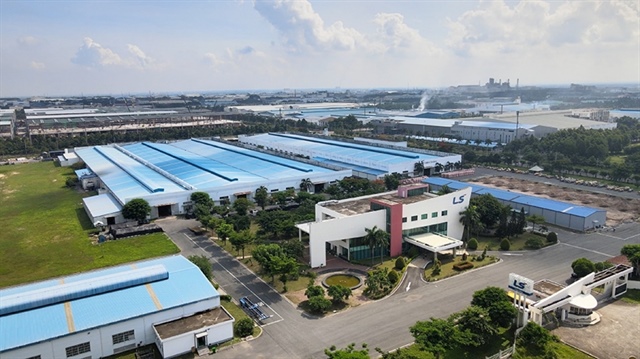Fresh collaborations emerging in wood and timber industry
Fresh collaborations emerging in wood and timber industry
Growth in Vietnam’s wood and timber industry is under threat of stagnation, but the establishment of inter-regional timber centre could help coordinate input supply and diverse order fulfilment.
Vietnam’s furniture processing and exporting industry ranks second in Asia, after China, and fifth in the world in terms of export turnover. But challenges are emerging, putting pressure on the goal of reaching a turnover of $20 billion by 2025.
The lack of raw wood is one of the biggest bottlenecks and could derail the wood processing industry. Single efforts to reduce imports of raw materials are nearing the 40 per cent mark; anything lower would not be feasible, according to experts. Afforestation areas could not meet the demand for raw materials for the wood processing industry, which is growing at a high rate.
Data from the General Statistics Office showed that the output of timber harvested from planted forests has continuously increased over the years, from 3.01 million cubic metres in 2006 to 19.5 million cu.m in 2019. It is estimated that, in 2020, it reached around 20.5 million cu.m, achieving the target set in the sector’s development strategy for 2006-2020.
The Centre for Industrial Studies Italia (CSIL) forecasted that the global furniture market will grow by about 4 per cent this year.
Among the major markets with a furniture consumption above $5 billion a year, Europe and Asia are expected to have the strongest growth in furniture and outdoor furniture consumption. Besides this, the main market of Vietnam’s wood industry, North America, will continue to grow steadily.
CSIL’s forecast goes along well with Vietnam’s overall strategy. A plan to develop a modern wood industry that ensures harmony between all stakeholders was approved by the five wood associations including the Association of Vietnam Timber and Forest Product (Viforest), the Dong Nai Wood and Handicraft Association, the Handicraft and Wood Industry Association of Ho Chi Minh City, the Binh Duong Furniture Association, and the Forest Products Association of Binh Dinh.
Do Xuan Lap, chairman of Viforest, said that a chain of links is gradually being shaped, connecting forestry farms and material areas with wood businesses for intensive production and better distribution to the markets and the global supply chain.
The Green Vietnam Fund, established in 2020, allows timber associations to promote their activities. The plan to develop an inter-regional furniture centre with large-scale production, processing, and trade of furniture and wood products is one of those activities carried out in Dong Nai. In cooperation with foreign forestry companies, research on wood materials suitable for Vietnam’s soil is also being conducted.
“The association can handle a large part of the challenges ahead, increase competitiveness, and contribute to building the Vietnamese brand for wood and timber products in the global markets,” Lap said. “A business cannot handle an order of 1,000 containers alone.”
While in theory, the expectations of the wood industry appear consistent with the market situation and conditions in Vietnam, weak links in such a chain could push the industry to other problems.
Analysts see that the shortage of wood materials will only change when policies related to forestry and land sectors are appropriately modified and supplemented.
Dr. To Xuan Phuc, senior advisor at Forest Trends, commented, “The lack of access to land funds for afforestation is currently the biggest difficulty the private sector is facing. So far, most land funds are managed by households and forestry companies.”
In addition, Phuc argued that there is a risk of export enterprises not meeting the technical requirements of the import markets, involving requirements for green growth, legal timber origin, and other regulations in many markets.
Some examples are the Lacey Act of the US, the EU’s Forest Law Enforcement Governance and Trade, and Australia’s Australia Illegal Logging Prohibition Act. Such requirements are continuing to create great challenges for the development of the local export industry, while the technical and phytosanitary measures used by import markets are increasingly common.
Phuc, who conducted many studies on forest resources in relation to national policies and people’s livelihoods in many of Vietnam’s regions, said, “The government needs to issue open and transparent policies, allowing forestry companies to contribute land to cooperate with private companies in creating a large source of timber plantations.”
He also argues that the risk of parties contributing capital to an association would be minimised, if the government comes up with strict mechanisms and determines sources of land funds participating in such association.

























